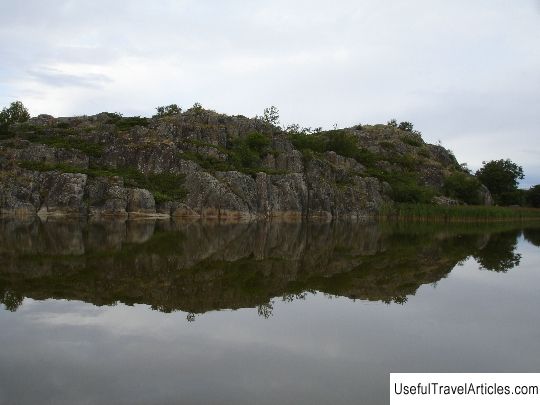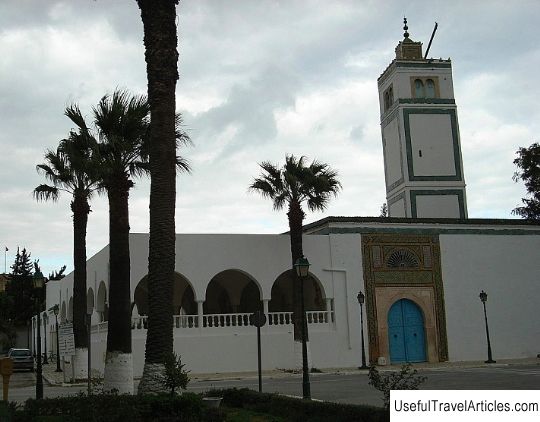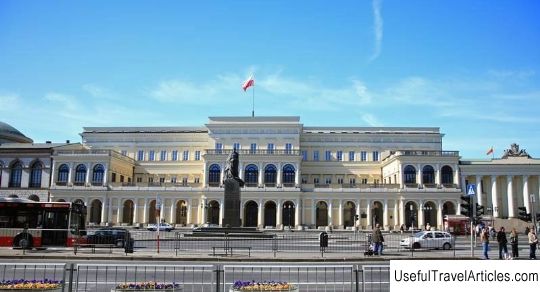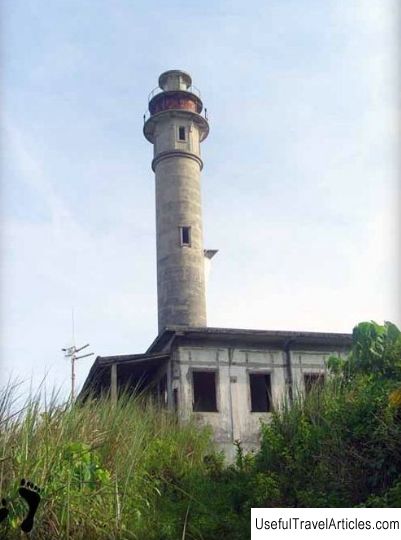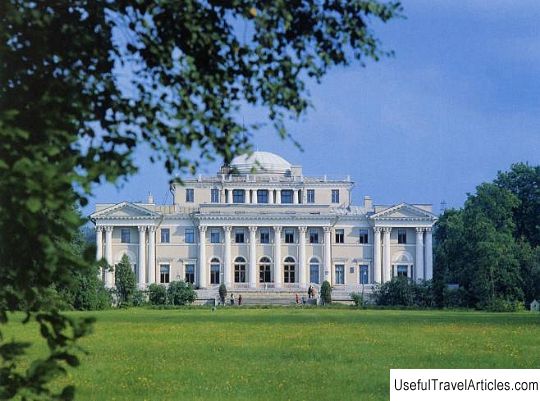New Holland description and photos - Russia - Saint Petersburg: Saint Petersburg
Rating: 7,5/10 (498 votes) 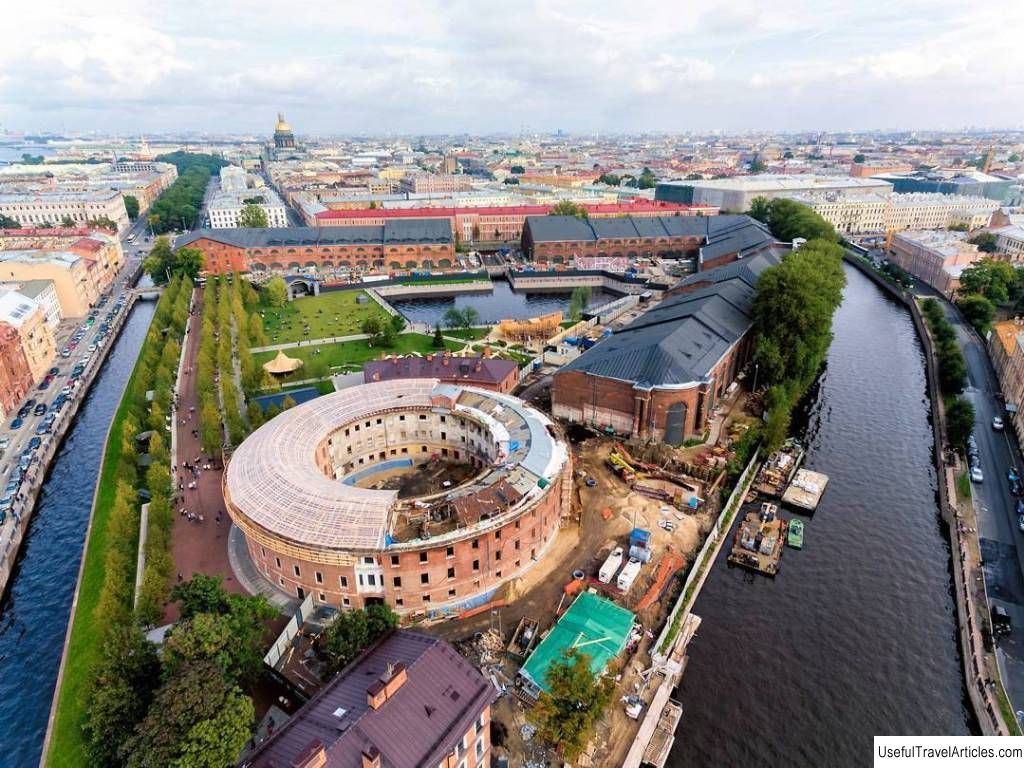
New Holland description and photos - Russia - Saint Petersburg: Saint Petersburg. Detailed information about the attraction. Description, photos and a map showing the nearest significant objects. Photo and descriptionNew Holland occupies a special place among several dozen islands that are part of St. Petersburg. This whole man-made island is a unique attraction. It contains architectural monuments of the early classicism period (more precisely, we are talking about industrial architecture). The area of the island is just under eight hectares. History of the islandThe history of this unusual sight began in the 18th century : the man-made island appeared exactly then. Rather, it was even two islands located side by side, but they were immediately united by one name; for a long time they have been perceived as a single whole and are spoken of in the singular. The island arose as a result of large-scale construction work : for one of the construction projects in the northern Russian capital, the construction of two canals was required, as a result, a new island appeared between them and the Moika River. According to legend, the name of the man-made island was invented personally by Peter the Great . However, there are no documents confirming this. In the 30s of the 18th century, the construction of pools and warehouses on the island began. This was necessary for the needs of shipbuilding . On the territory of the island there were many sheds in which various devices were kept for the repair and construction of ships. Special barns for lumber were built. The walls of these barns were lattice (to improve air circulation); in the cold season or in inclement weather, all the holes in the walls were covered with canvas. More and more new premises were built, soon there was very little free space on the relatively small territory of the island. In the 50s of the 18th century, a grove was completely cut down on the island: this was done so that the trees did not obscure the warehouses from the winds and did not interfere with the free circulation of air. Around the same time period, it was decided to demolish all wooden buildings and replace them with stone ones (many sheds are badly dilapidated). So on the island there was a whole complex of buildings erected in accordance with the canons of classicism . The construction of these buildings began in the mid-60s of the 18th century and ended in the 80s of the named century (according to other sources, the warehouses were completed already in the late 70s). Up to five hundred workers worked at the construction site every day. The new buildings were brick, unplastered (which was unusual in the 18th century). In the new warehouse complex , the timber for building ships was dried upright: it was an innovative idea, a departure from tradition. In the past, timber was always stacked for drying. The new method had two big advantages at once over the old method: preventing wood decay and increasing the storage capacity. In the late 70s, construction of a huge arch was started, which was supposed to connect the banks one of the channels. Construction was completed in the second half of the 80s of the 18th century. To be more precise, the arch was completed back in the 70s, but pretty soon it became necessary to make some changes to its design (which was immediately implemented). For the construction of the arch, brick and hewn granite were used - a rather unusual combination. The height of this monumental structure, which has survived to this day, is twenty-three meters, and its span is more than eight meters. It was planned to build a second arch, which was supposed to connect the banks of the second canal, but for a number of reasons its construction was never started. In the 20s of the XIX century, a prison was built on the island. The author of the building project called it rather poetically: "prison tower". But among the people a completely different name was assigned to this structure - "bottle" (the ring-shaped building evoked associations with the shape of the named vessel). In the middle of the 19th century, a brick forge was erected near this building. In the 90s of the 19th century, a special pool was built on the island, intended for holding in it shipbuilding experiments: at that time one of the Russian shipbuilders tried to create an unsinkable ship and carried out relevant experiments here. A powerful radio station was equipped on the island. It was actively used during the First World War. In Soviet times, the island was a closed territory. There were many warehouses here, operated by the naval base of Leningrad. Reconstruction of the island At the beginning of the XXI century, the rights to the man-made island were transferred to the city administration. She announced a competition for the best design for the use of buildings located on the island . The plans also included the reconstruction of these buildings, and the construction of new ones was also planned; in this regard, a competition was announced for the most interesting architectural solution. Soon after, there was a strong fire on the island, many warehouses burned down. The surviving historical buildings were significantly damaged by fire. It was then that the city administration announced that it was giving permission for the demolition of 19th century buildings. since their value is not great. According to the administration's requirements, the participants of the competition had to submit a project of the Palace of Festivals , as well as a number of public and business premises to be built on the island. Another requirement of the city administration to the applicants was the indispensable participation in the team of at least one international-level architect who knows all the details of the reconstruction of architectural monuments. Many famous architects took part in the competition. The winner was the project developed by Norman Foster . This project was highly appreciated by specialists, but ... it was never implemented. The reason was financial problems. After a while, a new competition was announced. This time, his terms were more detailed and somewhat more stringent. The victory was awarded to a project developed by a Dutch company. Currently, only part of the planned work has been carried out, reconstruction continues, but the island is already open to visitors . For the first time in three centuries, the townspeople had the opportunity to visit the famous island and see its sights. Reconstruction project Let's tell you more about the island reconstruction project, developed by a Dutch company. As mentioned above, the work on the implementation of this plan has been completed so far only partially, they will be completed by the mid-20s of the XXI century. Here are the main points of the project: - Creation of a park in the central part of the island . The park, according to the authors of the project, should be as comfortable as possible for visitors so that the townspeople can fully relax and enjoy the beauty of nature. It is such a park that now adorns the island's territory. - The next item is restoration of the prison building (the famous "bottle") and the nearby smithy. The project also involves the reconstruction of another historic building known as the Commandant's House. - An important part of the work is improvement of the pond , located in the center of the island, as well as the embankments of one of the canals. - One of the main points of the project is laying of communications . It is impossible to imagine a well-maintained island without well-established water supply, sewerage, and heating systems. - A separate item is spectacular illumination of restored architectural landmarks. A similar lighting is provided by the project for the territory of the park. - Another stage of reconstruction is the opening of a playground on the island. - The authors of the project planned to creating a garden not far from the restored smithy building - not an ordinary garden, but a herb garden. In such a garden, decorative cereals should grow, planted in a special way (in accordance with the laws of landscape design). - On the territory of the island, according to the project, there should also be temporary pavilions : they are necessary, for example, for holding cultural events. Demolition disputes Before you start reconstruction works were carried out demolition of buildings . Most of these were not historical landmarks, but some structures were controversial. In particular, an old radio station was destroyed, and the laboratory in which Dmitry Mendeleev worked for some time was also destroyed. According to those who gave the go-ahead for the demolition of these buildings, the destroyed buildings were superfluous, in vain they took up space on the island. This approach was outraged not only by the townspeople, but also by representatives of some international organizations. In particular, the famous British historian John Cooper expressed great regret over the destruction of historic buildings. He also expressed the following wish to the northern Russian capital: the city must remain as unique as it is now, and for this it is necessary to preserve all historical sights. Interesting factThere is a legend that during the construction of stone warehouses on the island, the construction manager lost the building project. Not wanting to admit his mistake, he did not say a word to the architect about his loss. Construction work continued. Their leader tried hard to remember the lost project in every detail in order to erect buildings from memory. And ... his efforts were crowned with success. When the work was done the architect (author of the project) examined the warehouses and was quite pleased. However, this story is one of the "historical anecdotes" and has no documentary evidence.               We also recommend reading Monument to the heroes of the Patriotic War of 1812 description and photo - Belarus: Polotsk Topic: New Holland description and photos - Russia - Saint Petersburg: Saint Petersburg. |

